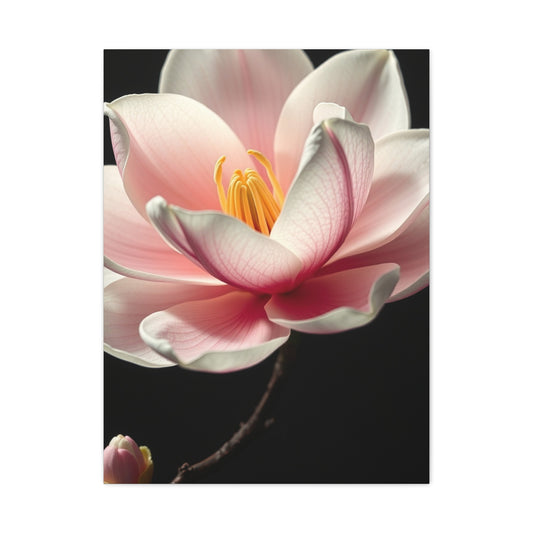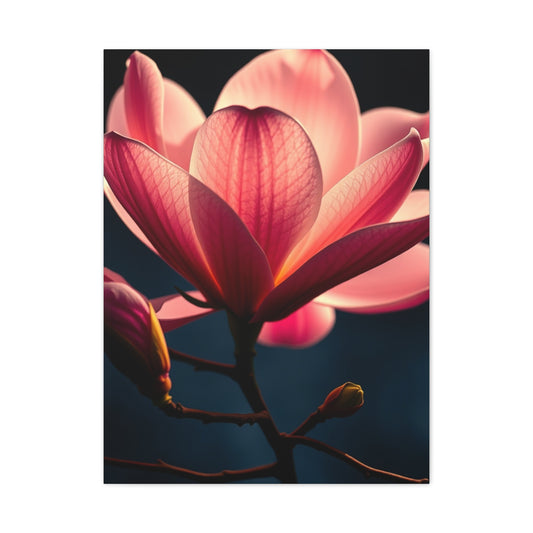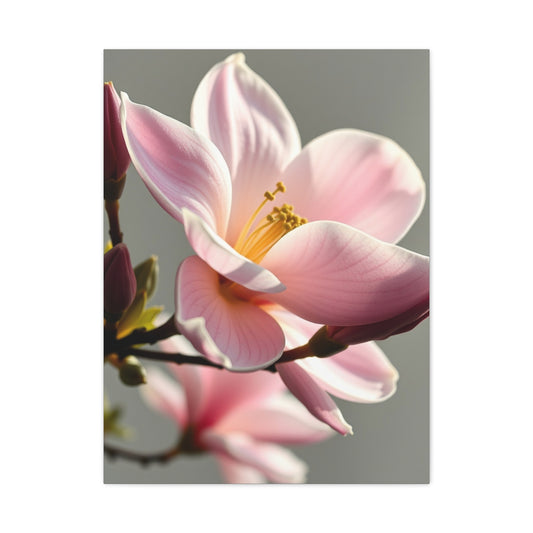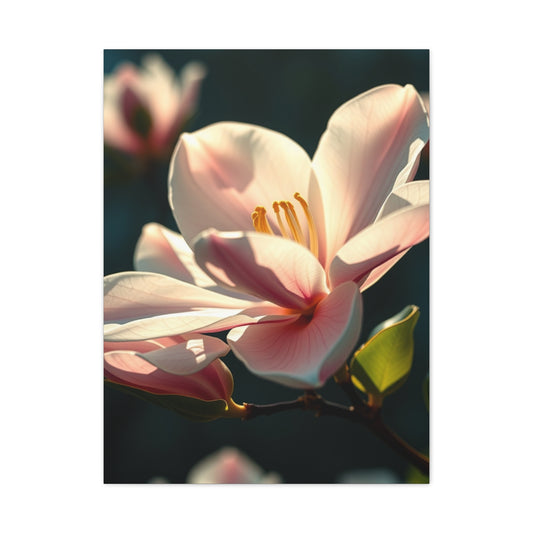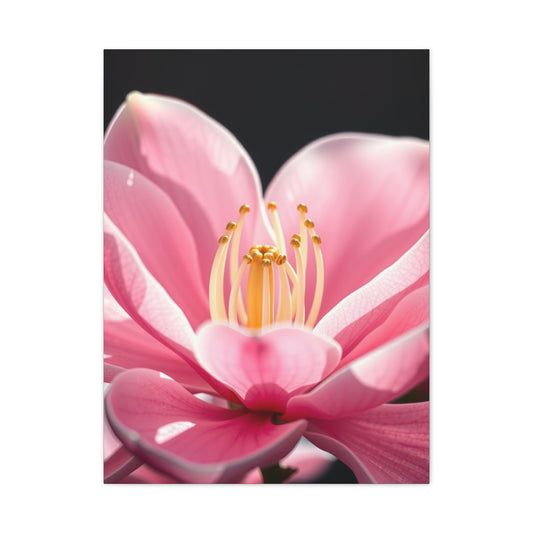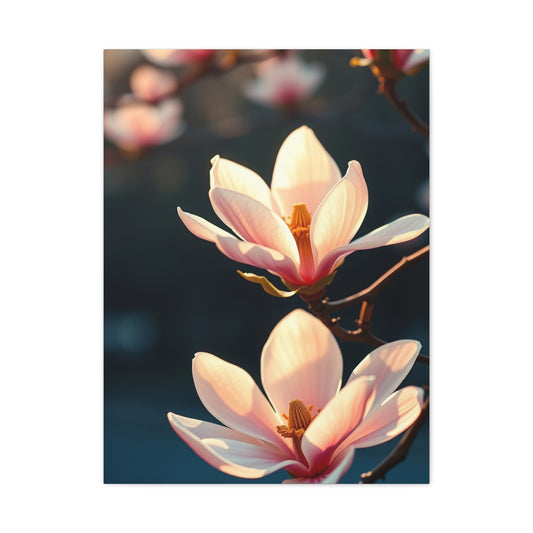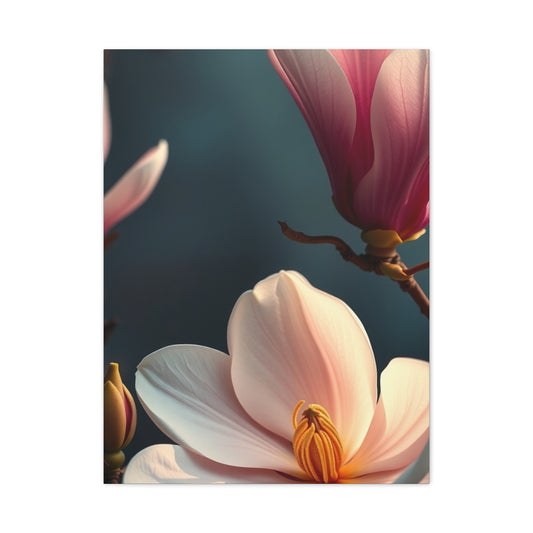A Guide to Choosing Mongolia Art That Elevates Your Space
Choosing art for your home is often more than a decorative decision—it is a reflection of identity, taste, and the unspoken story of the environment you live in. For many people, selecting wall art feels instinctive, but for others, the process can be overwhelming. Questions arise, such as how to determine the right size for a piece, which colors harmonize with existing interiors, or how to pair multiple works of art together without creating visual clutter. These uncertainties can leave homeowners feeling stuck in a cycle of indecision.
Art, however, should not feel intimidating. The walls of your home are a canvas, waiting for expressive imagery that not only beautifies the space but also captures fragments of who you are. What you hang on your walls influences the atmosphere more than almost any other element in your home. From botanical motifs resting quietly on stone walls to vibrant abstract works in the living room, art dictates mood, rhythm, and even a sense of memory.
The act of selecting wall art is, in essence, an opportunity for self-expression. Through textures, shapes, compositions, and palettes, art translates emotion into something tangible. Beyond the emotional dimension, it also carries practical weight: it grounds a space, enhances architectural features, and connects otherwise scattered decorative pieces into a coherent narrative. Understanding this dual purpose—personal expression and design cohesion—is the first step toward mastering how to choose art for your space.
Historical Background
The concept of adorning living spaces with art is far from new. From prehistoric cave paintings to grand Renaissance frescoes, art on walls has long held cultural, symbolic, and aesthetic significance. Early humans painted animals and figures to document life, to invoke spiritual presence, or to celebrate collective rituals. These primal images, though simple, demonstrated how walls became silent storytellers of human experience.
In classical civilizations, art was used both as ornament and as a display of intellectual refinement. Roman villas boasted frescoes of lush gardens and mythological scenes, transforming plain stone walls into portals of imagination. In the Middle Ages, wall art shifted into religious narratives, covering cathedral interiors with murals and stained glass that brought sacred tales to life.
During the Renaissance, wall art flourished as an essential part of architectural design, with patrons commissioning grand works that balanced opulence and symbolism. By the 18th and 19th centuries, domestic interiors also began featuring more personal collections, from portraits of family lineage to landscapes commemorating travel or heritage.
In modern times, wall art has expanded beyond cultural prestige into personal lifestyle. Minimalist photography, abstract canvases, and digital prints coexist with timeless oil paintings, allowing individuals to curate spaces that feel uniquely their own. Historical roots remind us that art is not merely decoration—it is a centuries-old practice of embedding meaning into everyday surroundings.
Core Concepts and Foundations
At the heart of choosing art lies an understanding of proportion, harmony, and resonance. These are the foundations that allow art to transform a room instead of simply filling space.
The first principle is proportion. Scale is often what separates an underwhelming wall from one that commands attention. A large bare wall may appear incomplete unless it is anchored by a sizeable work of art or a carefully composed gallery arrangement. Conversely, an intimate corner benefits from smaller works that create subtle intimacy rather than overwhelming the eye.
The second principle is harmony. Colors within the artwork should converse with the room rather than argue against it. This does not always mean matching tones exactly—sometimes contrast is what gives energy to a space—but it does mean understanding the balance between bold and quiet elements. For example, a neutral room may invite a vibrant piece, while a richly patterned room may call for something more subdued to prevent chaos.
The third principle is resonance. More than size or color, resonance asks whether the artwork evokes something meaningful. Art that resonates often carries emotional memory, personal symbolism, or simply a magnetic pull that cannot be rationalized. This is why choosing art is less about following strict formulas and more about trusting instincts. Resonance ensures that the art you live with does not just blend into the background but becomes a companion in your daily life.
Types and Categories
Wall art exists in a spectrum of forms, each offering a different contribution to the atmosphere of a room. Broadly, these can be grouped into categories that help guide selection.
Paintings remain the traditional and timeless choice. From impressionistic landscapes to modern abstracts, painted works carry texture, depth, and originality. Each brushstroke communicates the artist’s hand, bringing a tactile richness to interiors.
Prints and photographs offer versatility and accessibility. They allow individuals to enjoy works of art without the exclusivity of originals, and photography in particular adds realism, whether through portraits, architectural shots, or nature-inspired imagery.
Textile art, such as woven hangings or fabric panels, introduces softness and dimensionality. These pieces often carry cultural heritage and craft traditions, transforming walls with tactile presence.
Sculptural wall art, including metal installations or mixed media works, creates a three-dimensional effect that breaks away from the flatness of framed art. These pieces are especially effective for contemporary spaces seeking dynamism.
Finally, digital art has emerged as a new category, where screens or projections allow for rotating imagery and evolving experiences. With technology, walls can transform endlessly, reflecting moods, seasons, or artistic discoveries.
Understanding these categories helps narrow the field when selecting wall art. The choice between a painting, print, textile, sculpture, or digital display depends not only on budget but also on the energy you want the piece to radiate.
Practical Applications
Once the foundations and categories are understood, the process of choosing art becomes more approachable through practical steps. These applications transform abstract concepts into actionable strategies, making the selection of wall art less daunting and far more rewarding.
The first practical step is evaluating available wall space. Walls function as visual landscapes, and every landscape has its proportions. Measuring dimensions ensures that art neither overwhelms nor disappears within its environment. A statement piece can anchor a living room, becoming the gravitational center that draws attention and shapes conversation. In contrast, smaller works are ideal for transitional spaces—entryways, hallways, or alcoves—where the intimacy of scale invites close observation. Thinking in terms of scale also helps prevent imbalance; a vast blank expanse requires boldness, while a modest corner thrives on subtlety. In this way, the physical reality of the wall acts as the first guide in your curatorial journey.
The second step is assessing existing décor. Before adding new art, take inventory of the colors, patterns, and textures already in the room. Art should not exist in isolation but in dialogue with its surroundings. In a room dominated by neutral tones—beiges, creams, or soft grays—art becomes the spark that infuses vibrancy. A vivid abstract painting can bring energy, while a richly hued landscape can add warmth. Conversely, in a room already brimming with color and pattern, art may serve as a grounding element, offering moments of quiet balance. This evaluation prevents visual chaos and ensures that each piece enhances rather than competes with the décor.
The third step involves pairing styles and colors thoughtfully. Gallery walls, in particular, thrive when curated with attention to connection rather than randomness. Mixing does not imply disorder; it means weaving disparate elements together with subtle threads of harmony. For instance, a black-and-white photograph can be paired with an abstract print if both share similar tonal values, or a vintage botanical sketch can coexist with a contemporary watercolor if their framing materials echo one another. Frames, spacing, and shared motifs act as the connective tissue that binds the arrangement together, creating unity out of diversity.
A fourth step is embracing intuition. While measurements and color palettes provide structure, intuition often provides truth. The artwork that makes your gaze linger, the one that resonates in your mind long after you have seen it, is usually the right choice. Overanalyzing can dilute the joy of discovery and lead to walls that feel curated for others rather than for yourself. Art should stir curiosity, nostalgia, serenity, or delight—whatever emotion enriches your daily experience. Intuition ensures that walls carry personal authenticity rather than generic polish.
Finally, consider longevity. Some works feel relevant for a fleeting moment, aligning with current fashions or trends, while others carry enduring meaning that transcends time. Investing in timeless pieces—whether through original art, high-quality prints, or personally significant imagery—ensures that your walls remain resonant years into the future. Longevity also invites flexibility: art can shift locations within a home, moving from one room to another, continually offering fresh inspiration. Think of your collection not as static decoration but as a living archive of taste, memory, and growth.
Practical application, then, is the bridge between vision and reality. By measuring with precision, aligning with décor, curating with intention, trusting intuition, and prioritizing longevity, you craft walls that are not only aesthetically pleasing but also deeply meaningful. Each step becomes an act of storytelling, transforming blank surfaces into narratives that echo your personality and enrich the life within your home.
Techniques and Methods
Selecting the right wall art is both an art and a science. It requires a balance between intuition and structured methods that allow you to narrow choices without losing spontaneity. Several techniques can guide this process while still leaving room for individual flair.
One of the most effective methods is the use of layering. Layering involves combining different art forms within the same space—paintings alongside prints, photography with sculptural pieces, or textile art paired with minimalist frames. This technique prevents monotony and infuses a room with visual depth. By mixing materials, dimensions, and tones, you create a rhythm across the wall that reflects a curated sensibility rather than a single statement.
Another method is thematic curation. This involves choosing artworks connected by a unifying theme, whether it is landscapes, figurative portraits, botanical sketches, or abstract compositions. A theme brings coherence to a collection and makes it easier to experiment with scale and medium without the risk of discord. For instance, a dining room might feature several nature-inspired works, ranging from vintage botanical drawings to modern photographic studies of plants, all tied together through subject matter.
Spatial mapping is also an essential technique. Before hammering a single nail, map out the intended arrangement on the wall. Designers often recommend using paper cutouts or digital mock-ups to test placement and spacing. This prevents haphazard hanging and ensures that proportions feel intentional. Symmetrical grids lend a sense of order, while asymmetrical layouts feel more dynamic and casual. Both methods can be equally effective, depending on the atmosphere desired.
Another refined approach is color echoing. Here, the palette of the artwork subtly mirrors colors already present in the room, whether in textiles, furniture, or flooring. Echoing does not mean identical repetition; rather, it draws threads of color that connect separate elements of the room into a harmonious whole. A golden hue in a painting may resonate with brass hardware, while shades of blue may echo a velvet sofa, creating an unspoken dialogue between art and decor.
Finally, the method of focal anchoring is indispensable. Every room benefits from a focal point—an object or image that naturally draws the eye. Art can assume this role by being placed in strategic positions, such as above a fireplace, behind a sofa, or at the end of a hallway. A focal piece provides orientation within the room, ensuring that other decorative details orbit around it rather than competing chaotically.
Challenges and Common Mistakes
Despite the variety of methods available, many people encounter difficulties when choosing wall art. One of the most common challenges is overthinking the decision. While it is natural to seek the perfect piece, this hesitation often leads to empty walls that feel incomplete for years. Allowing intuition to play a role helps overcome paralysis and brings warmth into the space sooner.
Another mistake is ignoring scale. A small frame lost on a vast wall diminishes the impact of both the art and the room itself. On the other hand, oversized works crammed into tight corners create imbalance. Measuring carefully and considering sightlines ensures that art feels proportionate and intentional.
Color misalignment is another frequent misstep. Selecting a piece solely because it is beautiful, without considering how its colors interact with the existing palette, can lead to visual disharmony. While contrast is sometimes desirable, clashing tones that fight rather than complement can create unease in the room.
A further pitfall is the tendency to hang art too high. Many people instinctively place artwork closer to the ceiling, forgetting that the most effective height is typically at eye level. Hanging at the correct level ensures that art feels connected to the room rather than detached from it.
Another challenge lies in neglecting emotional connection. It is tempting to follow trends or to select works that others recommend, but art should ultimately resonate on a personal level. Displaying pieces without emotional significance often results in a space that feels staged rather than lived in. Choosing art that evokes memory, passion, or serenity ensures authenticity.
Finally, one overlooked mistake is uniform framing. While consistent frames can sometimes create cohesion, using identical styles for every piece may flatten the overall effect. Allowing for variation in frame color, material, and texture adds subtle sophistication and prevents monotony.
Trends and Future Outlook
The landscape of wall art is constantly evolving, shaped by cultural shifts, design movements, and innovations in technology. In recent years, several trends have emerged that highlight the direction in which wall art is moving.
One major trend is the rise of oversized statement pieces. Homeowners and designers are increasingly choosing single monumental works that dominate a wall rather than numerous smaller ones. These large-scale pieces serve as powerful anchors for a room, making bold declarations of style and individuality.
Sustainability is another growing trend. As people become more conscious of environmental impact, there is a growing preference for art created with sustainable materials, natural pigments, or upcycled elements. Textile hangings made from organic fibers and sculptures composed of reclaimed metals exemplify this shift toward eco-conscious creativity.
Personalization has also become a defining trend. Custom commissions, family portraits reimagined in modern styles, or artworks reflecting personal journeys are becoming increasingly popular. People want walls that tell unique stories rather than relying solely on mass-produced prints.
Digital art is also revolutionizing how we think of walls. With digital frames and projection technologies, individuals can display a rotating collection of works that evolve throughout the day. This dynamic approach allows for versatility, with walls shifting mood and tone according to occasion or season.
Looking toward the future, one can anticipate further integration of interactive art. Pieces that respond to light, sound, or even touch are becoming more accessible, turning static walls into living surfaces. Additionally, the blending of global aesthetics—such as African textile motifs with Scandinavian minimalism—will likely continue as cross-cultural appreciation grows.
As design tastes evolve, the future of wall art seems poised to embrace both timelessness and innovation: timelessness in the appreciation of painting, photography, and sculpture, and innovation through digital mediums and sustainable practices.
Expert Insights
Designers, curators, and art consultants often emphasize that choosing wall art is as much about storytelling as it is about design. Experts agree that the best collections evolve rather than being assembled all at once. This allows for authenticity and ensures that the space reflects personal growth and shifting tastes.
One insight shared by many experts is to trust instinct over rigid rules. While measurements, colors, and proportions matter, art should ultimately evoke a visceral response. The piece that makes you pause, that stays in your mind even after leaving the gallery or scrolling past an image online, is often the right choice.
Another common perspective is the importance of layering high and low art. Pairing an original painting with affordable prints or combining vintage finds with contemporary works adds richness and complexity to a collection. Experts caution against believing that meaningful art must always carry a high price tag. What matters most is its resonance and placement.
Curators also emphasize narrative. Walls are not just surfaces but chapters of a home’s ongoing story. Whether through thematic cohesion, color continuity, or emotional symbolism, art should weave into the broader narrative of daily life. A gallery wall, for instance, might reflect family heritage, travel experiences, and personal milestones all within a single composition.
Finally, experts highlight the necessity of patience. Art is best collected gradually, with consideration and exploration. Rushing the process often leads to impersonal choices, while thoughtful curation results in walls that inspire for years to come.
Emerging Trends in Wall Art
The world of wall art continues to evolve, responding to shifts in culture, technology, and the growing desire for personalization in home design. What once felt like a choice between framed paintings or photographs has expanded into a boundless spectrum of materials, formats, and styles. Understanding the latest currents can help you discover pieces that feel both contemporary and timeless, while ensuring that your interiors carry a sense of freshness.
One prominent trend is the celebration of large-scale art. Oversized canvases or monumental prints create an immediate sense of drama and authority in a room. These works often function as the centerpiece, transforming otherwise modest interiors into striking environments. Their appeal lies not only in their scale but also in their ability to simplify decision-making: rather than multiple small pieces, a single large work can anchor the design of an entire room.
Minimalist abstract works also continue to rise in popularity. Clean lines, subdued palettes, and geometric compositions provide calmness in spaces that might otherwise feel overstimulated by modern life. Minimalist art aligns particularly well with open-concept living areas or interiors that lean toward Scandinavian or Japanese influences, where tranquility is valued as highly as beauty.
On the opposite end of the spectrum lies the maximalist movement. This embraces layers of color, eclectic imagery, and bold juxtapositions. Maximalist wall art thrives in spaces that celebrate personality, where walls become storytelling devices filled with visual abundance. From vibrant pop art posters to baroque-inspired reproductions framed in gilded detail, maximalism revels in energy rather than restraint.
Sustainability has also emerged as a defining element of modern wall art. Many artists now experiment with reclaimed wood, recycled metals, or organic pigments, creating works that are as environmentally conscious as they are visually captivating. Textile hangings made from natural fibers or woven pieces crafted through traditional techniques are increasingly sought after, offering both tactile richness and an eco-friendly ethos.
Another notable trend is digital integration. Digital canvases and projection-based displays have introduced flexibility into wall art, allowing homeowners to rotate collections, adjust colors, or display interactive works that respond to sound or movement. This innovation aligns with the growing desire for adaptability in home design, ensuring that art can evolve alongside moods or seasons.
Cultural fusion is also shaping emerging trends. Rather than adhering to a single aesthetic tradition, many collections now embrace cross-cultural dialogue. African motifs may coexist with Scandinavian minimalism, or Japanese calligraphy might be paired with modernist abstractions. This blending reflects a global appreciation for art as a universal language that transcends borders.
Finally, personalization remains at the forefront. Custom portraiture, commissioned artworks, and even personalized maps or star charts turn wall art into deeply meaningful expressions of identity. This trend emphasizes the shift away from generic decoration toward art that is intimately tied to the individual story of the homeowner.
Step-by-Step Guides
While trends offer inspiration, the actual process of selecting and arranging wall art can still feel daunting. To simplify the journey, here is a comprehensive step-by-step guide that balances intuition with practical strategy.
Step 1: Define the Purpose of the Space
Every room has a mood and function, and the art you choose should reinforce that atmosphere. In a bedroom, art might evoke calmness, while in a dining room, it could spark conversation. In an office, it may need to motivate, and in a hallway, it might serve as a narrative transition between spaces. By defining purpose, you establish criteria for the mood your wall art should embody.
Step 2: Measure and Map the Wall
Before browsing galleries or stores, take accurate measurements of the wall. This allows you to determine whether the space calls for a large statement piece, a collection of medium works, or a gallery wall composed of smaller frames. Mapping the wall with paper cutouts or digital mock-ups helps visualize proportions and avoid later frustration.
Step 3: Explore Different Categories of Art
Once measurements are complete, explore categories of wall art. Paintings may add tactile richness, photography can introduce realism, textiles bring warmth, and sculptures add dimension. By exploring categories, you gain clarity about which medium resonates most with your vision for the space.
Step 4: Align with Existing Decor
Assess the furniture, textiles, and architectural features already present in the room. Consider how the colors, patterns, and textures of your decor can either harmonize with or contrast against potential artwork. A neutral-toned sofa, for example, can serve as a perfect backdrop for a vibrant abstract canvas.
Step 5: Select a Color Strategy
Choosing colors for wall art does not mean matching shades exactly. Instead, select a strategy: you may wish to echo colors already in the room, introduce complementary hues for contrast, or choose neutral tones to bring balance to more colorful interiors. This step ensures cohesion without sacrificing individuality.
Step 6: Establish a Theme or Narrative
While not mandatory, themes can provide cohesion. A series of coastal landscapes may bring serenity to a bathroom, while black-and-white photography can create drama in a hallway. Thematic approaches allow for variety within unity, giving your collection a curated feel rather than randomness.
Step 7: Consider Framing and Presentation
Framing is often overlooked, but it significantly shapes how art is perceived. Rustic wood frames may enhance landscape photography, while sleek metallic frames highlight contemporary works. Float-mounted canvases or shadowbox frames add depth. Presentation should always be consistent with the tone of both the artwork and the surrounding decor.
Step 8: Arrange and Hang Thoughtfully
Placement is crucial. As a general guideline, hang art at eye level for a natural connection. When creating a gallery wall, leave consistent spacing between frames to maintain balance. Symmetry works well in formal spaces, while asymmetry conveys spontaneity and modernity. Always step back to assess how the arrangement interacts with the overall room.
Step 9: Trust Intuition
Despite measurements and guidelines, intuition should not be disregarded. Art is ultimately a personal expression, and the piece that pulls at your emotions is often the one that will bring lasting satisfaction. If you feel drawn to an unexpected piece, consider the reasons behind that attraction—it may reveal something essential about your taste and identity.
Step 10: Allow for Evolution
A wall should never feel finished in a rigid sense. Collections can grow, shift, or adapt as tastes evolve. Leaving room for change ensures that your home remains a living canvas rather than a static showroom. The most compelling walls tell stories of growth, travel, and discovery over time.
Advanced Techniques for Curating Wall Art
By the time you reach the final stage of selecting and arranging wall art, the basic principles have already been absorbed: proportion, harmony, and resonance. Yet beyond those essentials lies a more nuanced practice, one that blends subtle artistry with deliberate strategy. Advanced techniques elevate ordinary decoration into a profound aesthetic experience, ensuring that every wall feels like an intentional canvas rather than an afterthought.
One refined technique is layering dimensions. Rather than limiting yourself to two-dimensional works, consider integrating pieces that extend into the third dimension. Metal sculptures, relief carvings, and textile panels add shadows and textures that shift with the light, imbuing the wall with dynamism throughout the day. This layering transforms flat walls into interactive surfaces that invite tactile and visual exploration.
Another technique is chronological storytelling. Arrange artworks in a sequence that reflects progression—whether it is a timeline of your travels, a series of evolving artistic styles, or simply a narrative from left to right that unfolds like chapters in a book. This approach works especially well in corridors or staircases, where viewers naturally follow a path and encounter the narrative gradually.
Experimenting with negative space is equally powerful. Not every inch of a wall must be filled. Intentionally leaving open areas amplifies the presence of each artwork, allowing breathing space and preventing visual overcrowding. Negative space also directs attention more sharply to focal points, underscoring their importance without distraction.
Advanced framing techniques further heighten presentation. Floating frames, double matting, or unconventional materials like reclaimed wood or plexiglass create unique contexts for each piece. The right frame is not just a boundary but a complement, shaping perception and ensuring that art integrates seamlessly with its environment.
Finally, consider rotational display as an ongoing practice. Rather than fixing a collection permanently, rotate pieces seasonally or as your tastes evolve. This practice, often used in galleries, refreshes a space without requiring new purchases. It also keeps your relationship with art alive, as you rediscover pieces anew each time they reemerge onto the wall.
Integrating Wall Art with Architecture
Wall art becomes even more compelling when it does not simply exist within a room but interacts with the architecture itself. Considering architectural features allows art to enhance the built environment rather than feeling like an external addition.
For example, tall vertical works can accentuate the grandeur of high ceilings, drawing the eye upward and emphasizing spaciousness. Wide panoramic pieces echo the horizontality of long walls or expansive windows, reinforcing balance in the room. Nooks, alcoves, and transitional spaces such as stair landings offer perfect opportunities for intimate works that surprise and delight upon discovery.
Another architectural integration involves considering light. Natural light from windows or skylights can dramatically alter the mood of an artwork throughout the day, while artificial lighting can be strategically placed to spotlight certain works. Track lighting, recessed fixtures, or wall-mounted lamps can turn ordinary pieces into focal points, adding drama and theatricality.
Mirrors and reflective surfaces can also be used to enhance wall art indirectly. Positioning artwork opposite a mirror doubles its impact and introduces a sense of movement, particularly when the art itself features dynamic compositions or vivid colors.
By weaving art into architecture rather than treating it as an afterthought, you ensure that it feels inseparable from the space, as though it was always meant to exist there.
Emotional and Psychological Dimensions of Wall Art
Beyond aesthetics and proportion lies the profound influence of wall art on human psychology. Every choice carries emotional weight, shaping not only the appearance of a room but also the mood of those who inhabit it.
Colors are particularly influential. Soft blues and greens often evoke calmness, making them ideal for bedrooms or meditation areas. Warm oranges and reds stimulate energy, suiting dining rooms or creative studios. Monochromatic schemes create sophistication, while multicolored pieces inject playfulness. Understanding the psychological effects of color allows you to align wall art with the atmosphere you want to cultivate.
Subjects also influence emotion. Landscapes expand a sense of horizon and bring serenity, portraits establish intimacy, abstract works stimulate curiosity, and botanical themes evoke organic vitality. Choosing subject matter thoughtfully ensures that walls resonate not just visually but emotionally.
The very presence of art fosters identity and memory. A photograph from travels, a portrait of family, or a print that recalls cultural heritage transforms walls into repositories of meaning. Surrounding yourself with art that carries personal significance enriches daily life, turning mere rooms into sanctuaries of belonging.
Ultimately, art on walls functions as both a mirror and a window: a mirror reflecting who you are, and a window opening into worlds of imagination, memory, and aspiration.
Challenges of Collecting and Displaying Art in Modern Homes
While the benefits of wall art are abundant, curating it in modern homes is not without its obstacles. Limited wall space is one common challenge, especially in compact apartments where open areas may already be occupied by shelving or windows. In such cases, smaller works or vertical arrangements can maximize space without overwhelming it.
Another challenge is the fast pace of design trends. It is tempting to chase what is fashionable, yet this often results in art that feels transient. Balancing contemporary appeal with timelessness ensures that pieces remain relevant long after the trend cycle has shifted.
Budget constraints also pose difficulties. Original artworks can carry a significant cost, leading many to rely on prints or reproductions. Yet even with limited budgets, creativity can flourish—vintage markets, student exhibitions, and independent artists offer opportunities to acquire meaningful pieces without excessive expense.
Lastly, the permanence of art placement can be daunting. Once a hole is made in the wall or a large piece is installed, it feels fixed. Overcoming this hesitation requires viewing art as a living collection rather than a final verdict. With careful planning and openness to change, these challenges become opportunities for experimentation rather than obstacles.
The Future of Wall Art in Everyday Living
Looking ahead, the role of wall art in homes will likely continue to expand as lifestyles evolve. With technology advancing rapidly, digital displays will become increasingly sophisticated, offering interactive works that shift with sound, motion, or even emotional recognition. Personalized digital galleries may allow homeowners to curate collections from global museums or local artists at the touch of a button.
Sustainability will also remain central. Eco-conscious consumers will seek works created from renewable resources or by artists who prioritize ethical practices. This not only aligns with environmental responsibility but also deepens the meaning of art as a mindful choice.
Cultural hybridity will shape future aesthetics as well. Walls will feature pieces that cross boundaries, blending global traditions into eclectic yet harmonious expressions. This reflects the interconnectedness of modern life, where art becomes a unifying language across diverse heritages.
At the same time, timeless practices such as painting, photography, and sculpture will endure. Their tangible presence and human craftsmanship provide a counterbalance to digital immersion, ensuring that wall art remains a tactile and soulful anchor in increasingly virtual environments.
Conclusion
Choosing wall art for your space is more than decoration—it is a journey into self-expression, narrative, and harmony. From the earliest cave paintings to today’s digital innovations, art on walls has always been a way for humans to tell stories, celebrate identity, and create environments that resonate emotionally and visually.
Throughout this exploration, we have seen that selecting art involves both practical considerations—such as scale, proportion, and placement—and deeply personal dimensions—such as emotion, memory, and intuition. Emerging trends encourage us to embrace sustainability, personalization, and cultural fusion, while advanced techniques remind us of the importance of framing, negative space, and rotational display.
The greatest lesson in curating wall art lies in patience and authenticity. Allow collections to evolve gradually, trust your instincts, and resist the urge to fill walls hastily. Each piece should feel like a conversation partner, adding depth and meaning to daily life.
Ultimately, walls are not simply surfaces to be covered but canvases waiting to reflect the stories of those who inhabit the space. By choosing art with intention and openness, you transform a house into a home, a structure into a sanctuary, and walls into living narratives that inspire for years to come.

